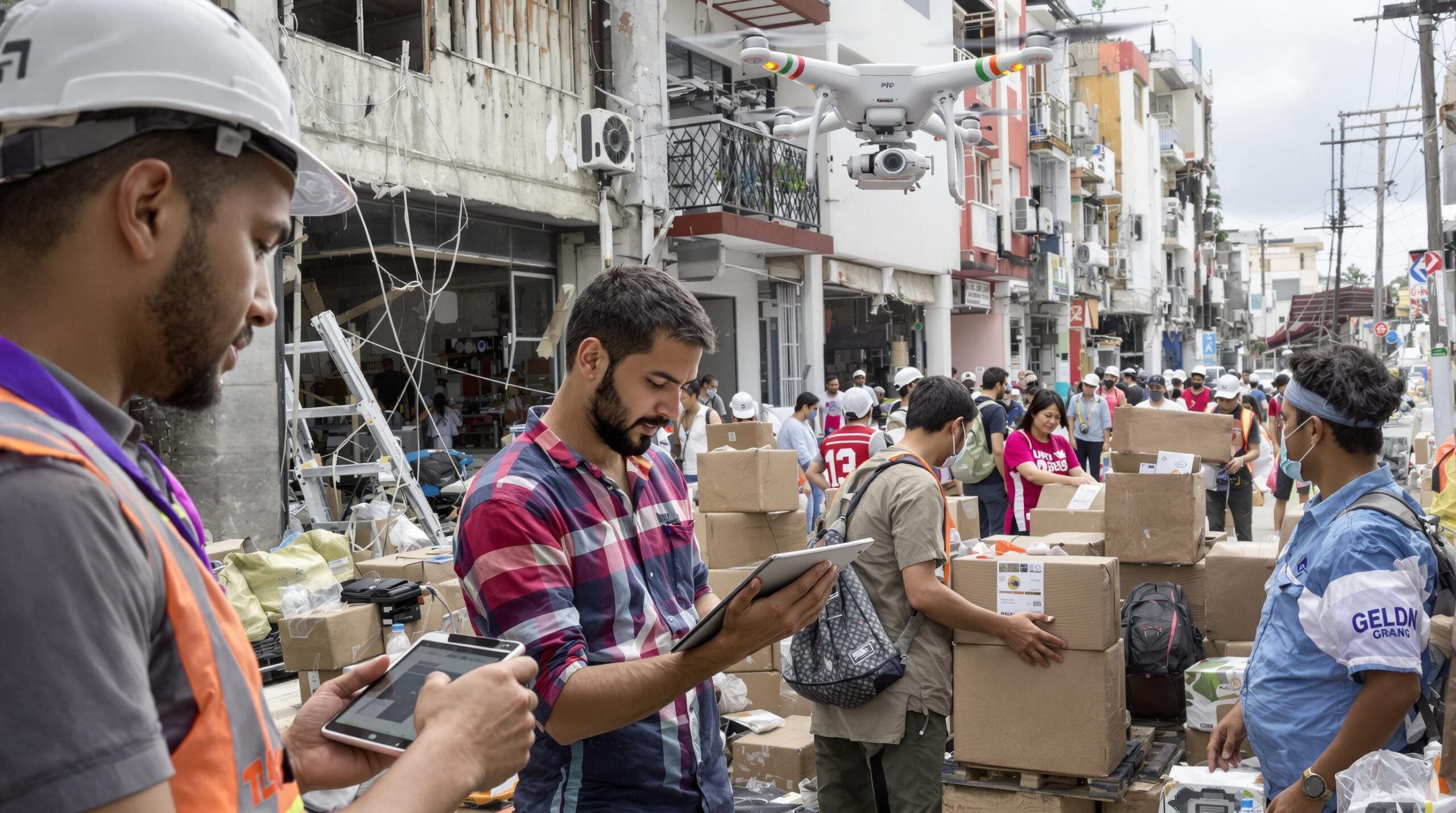Artificial intelligence (AI) is rapidly becoming an essential component in disaster relief operations across the globe. From coordinating complex logistics to providing real-time damage assessments, AI’s impact is redefining how governments and aid organizations respond to emergencies. By harnessing data and automating time-consuming tasks, AI-driven technologies ensure faster, safer, and more efficient relief efforts.
Revolutionizing Disaster Prediction and Early Warning Systems
Early warning is crucial for minimizing the impact of natural disasters. AI models analyze vast amounts of environmental, geographic, and meteorological data to predict events such as hurricanes, earthquakes, and floods. Machine learning algorithms can detect early signs of potential disasters by recognizing patterns humans may overlook. These algorithms automate the process, scanning satellite images, weather reports, and seismic activity in real time.
This automatic detection allows authorities to issue accurate alerts and mobilize resources long before a disaster strikes. Communities can then evacuate safely and efficiently, dramatically reducing loss of life. Proactive warnings enable responders to prepare essential supplies and coordinate in advance, leading to more effective disaster management.
Enhancing Real-Time Disaster Response with AI-Powered Tools
The crucial moments following a natural disaster often determine how much damage and suffering can be mitigated. AI-driven technologies streamline these initial responses by providing up-to-date information on affected zones. Automated drones, equipped with AI tools, capture aerial imagery and assess destruction with remarkable speed and accuracy. This enables emergency teams to map out access routes and locate isolated survivors quickly.
Natural language processing (NLP), a subfield of AI, processes social media messages, texts, and emergency calls for urgent requests. Platforms that utilize AI filters and prioritize distress signals, empowering relief workers to allocate resources more strategically. These innovations eliminate information overload, ensuring critical help reaches those in dire need within hours, not days.
Optimizing Relief Logistics and Resource Allocation
Managing resources in a disaster zone is challenging due to damaged infrastructure and unpredictable human needs. AI-powered logistics platforms analyze real-time supply, demand, and road conditions to direct shipments where they are needed most. These systems develop optimal routes and distribution points, minimizing wasted time and fuel during delivery.
Some platforms use predictive analytics to forecast supply shortages before they occur. AI evaluates previous disaster patterns, terrain, and weather to anticipate where food, water, or medical aid will run short. Human experts can then make informed decisions and adjust their strategies as conditions change, making the relief operation more resilient and responsive.
Supporting Search-and-Rescue Operations
Time is of the essence in search-and-rescue operations after a major disaster. AI-driven robots, drones, and sensor networks accelerate the search for trapped or missing individuals. Drones equipped with image recognition software scan wide areas and identify heat signatures, helping to locate survivors among debris.
Sound recognition algorithms in robotic units can pick up voices or movement under rubble, further increasing the odds of timely rescues. Every minute saved boosts survival rates. Robotics and AI also minimize risk to first responders by surveying hazardous locations before human teams enter.
Analyzing and Learning from Past Disasters
AI’s power extends beyond immediate disaster response. By processing data retrospectively, AI uncovers strengths and weaknesses in previous relief efforts. Machine learning tools analyze outcomes, response times, and resource use across thousands of incidents. Key performance indicators reveal what strategies worked or failed.
This post-disaster analysis informs planning for future emergencies. Organizations can refine their methods, ensure better training, and update protocols. The iterative learning process, driven by AI analytics, continually improves global preparedness and resilience, setting a new standard for proactive disaster relief.
Driving Collaboration and Communication Worldwide
Disaster relief often involves multiple agencies with different specializations and resources. AI bridges communication gaps between governments, NGOs, healthcare providers, and local communities. Unified digital platforms powered by AI facilitate information sharing and joint decision-making in real time.
These platforms translate languages, integrate data from various agencies, and highlight urgent needs as situations evolve. The result is a coordinated approach that prevents duplication of effort and ensures all communities receive prompt, customized support. AI-driven collaboration has removed many barriers that once slowed international aid delivery.
Addressing Challenges and Ethical Considerations
Despite significant progress, AI integration into disaster relief presents several challenges. Data privacy and the security of sensitive information remain a primary concern. Agencies must ensure that personal data collected during crises is handled with the highest standards of ethics and security.
AI systems can only be as effective as the data they receive. Incomplete or biased data can lead to overlooked communities and misallocated resources. Continuous efforts to train AI models with diverse and comprehensive datasets are essential. Responsible development and deployment will enable AI to become a trustworthy partner in global disaster management.
The Future of Disaster Relief: AI’s Expanding Role
The future of disaster relief will see AI embedded in every aspect of emergency management. Innovations in robotics, communication, and logistics are already underway, promising more resilient, adaptive, and humane responses. Collaboration between scientists, policymakers, and communities will drive the ethical advancement of these tools across borders.
With continuing improvements, AI will save more lives, decrease economic losses, and help communities recover faster than ever before. As technology advances, the global response to disasters will become smarter, more targeted, and increasingly effective, marking a turning point in humanitarian aid.
Conclusion: Empowering Relief Efforts through AI Innovation
AI-driven technology is transforming every stage of disaster relief, from prediction and preparedness to real-time response and long-term recovery. Smart technology empowers human teams, reduces risks, and enables data-driven decisions that save lives. As challenges arise, continued innovation and collaboration will keep shaping the future of emergency management, ensuring that even the hardest-hit communities receive the support they need.


